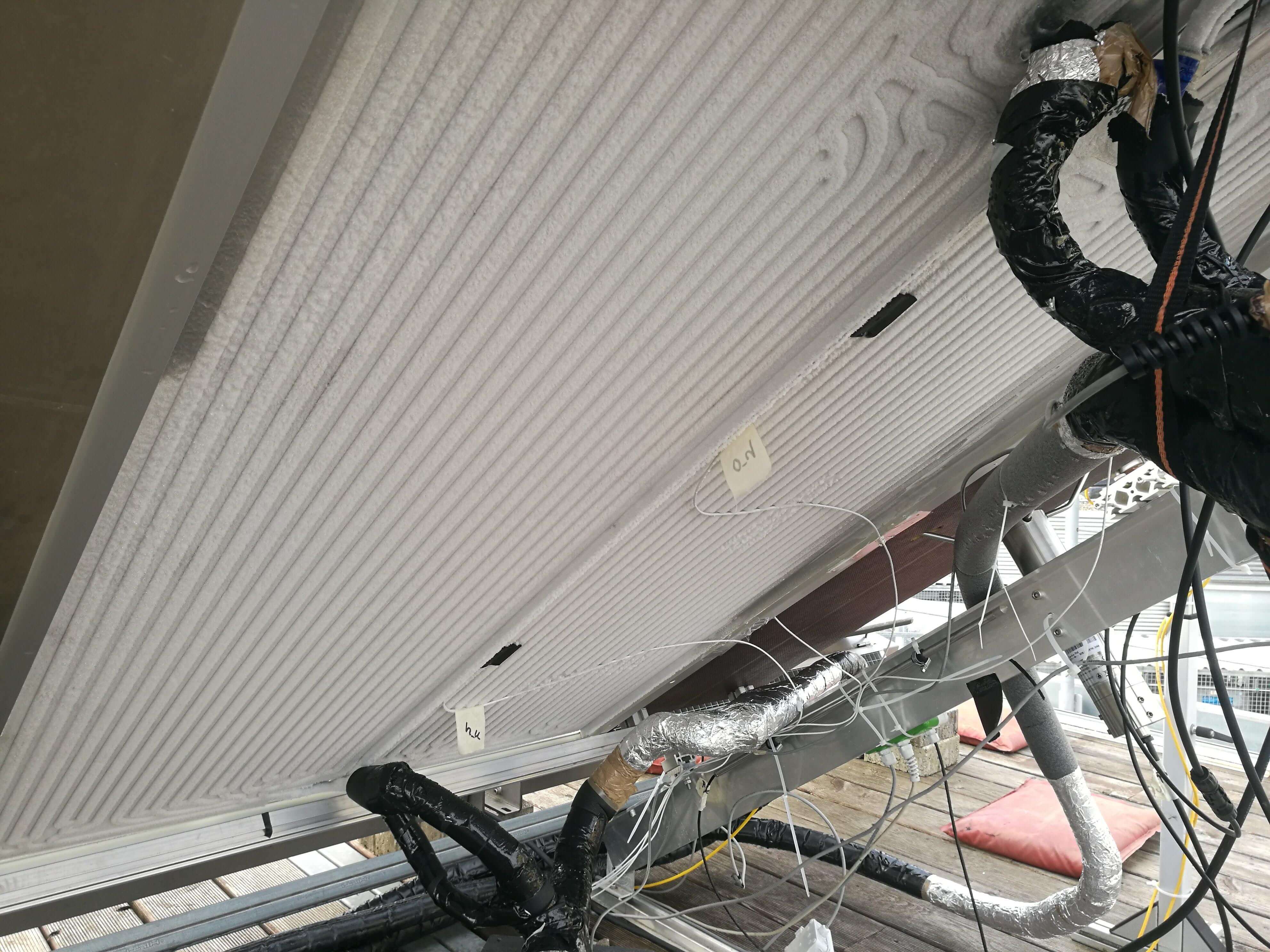| Duration: | 1/2016 - 12/2018 |
| Contracting Authority/ Sponsors: | Projektträger Jülich (PTJ), Funding reference number 0325854A und 0325854C , Bundesministerium für Wirtschaft und Energie (BMWi) |
| Project Partners: | PA-ID PROCESS GmbH (2power), Vela Solaris (Polysun) |
| Project Focus: |
WPVT-Freeze
Characterization of the Performance of Heat Pump Heating Systems with Source-Side Installed PVT Collectors and Model Development for Integration into Commercial Planning Tools (WPVT-Freeze)
Modern room heating systems combined with heat pumps offer great potential for energy saving in buildings. So far, geothermal probes or outdoor air units have usually been used as the heat source for the heat pump. The respective technology has its advantages and disadvantages.
The use of PVT collectors offers the opportunity to use the existing (roof) area for electricity generation and as a source for the heat pump.
Up to now, PVT collectors have usually only been used in the range down to 0°C. An extended operating temperature range down to -25°C additionally offers the use of latent energy through condensation and icing.
Through real operation of a PVT heat pump system with a PVT module field as the only heat source, it has been proven that the specified loads (23 taps of domestic hot water according to ErP, as well as a winter heating load of 65 kWh/d) can be covered.
Optimization potential was identified and implemented in new concepts by the project partner PA-ID.
Potential estimations of condensation and icing were calculated on the basis of theory, and frequency simulations were carried out. Measurements in the climate chamber for energetic use of condensation and icing showed possible energy gains of 10-15%.
Based on previous scientific work, the existing collector model equation was extended to model effects such as condensation and icing.
Extensive measurements of PVT modules were performed to validate the extended model approach. However, the existing model extension is not yet sufficient to describe the above-mentioned effects satisfactorily.
Simulations using the Polysun software have shown that extending the operating temperature range of PVT collectors to -20°C can result in an additional energy gain of around 30%. This includes the latent energy gains from condensation and icing.



